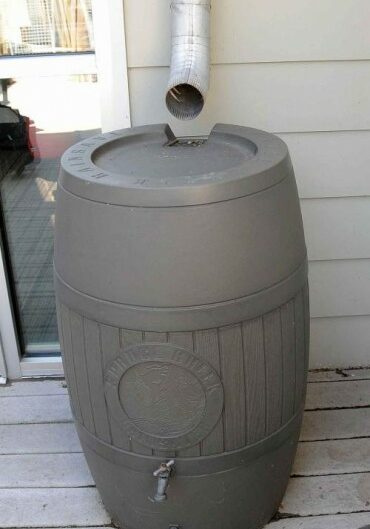Rainwater Harvesting

With all the rain we get, we get a lot of questions about rainwater harvesting. The Clackamas River Water Providers partnered with the Clackamas County Soil and Water Conservation District to develop a Rainwater Harvesting Calculator. The purpose of this calculator was to provide our community with a tool to help determine how to much rainwater they could collect and save, to supplement their outdoor irrigation.
What is WATER HARVESTING? Rainwater harvesting is a method of collecting, storing, and using rainwater that falls on a solid impervious surface, such as a roof. Rainwater harvesting has multiple benefits, including reducing the demand for fresh water from other sources and reducing the detrimental impacts of increased runoff from urbanization and development. Water harvesting conserves water by tapping into a readily available source (rain) and saving it for a later date as well as protects soils by reducing erosion caused by increased stormwater runoff. Not all your irrigation needs will be met by rainwater harvesting so it is important to also look at other ways of conserving water in your landscape!
How does water harvesting WORK? Typical water harvesting is accomplished by directing roof down spouts to a storage device, such as a barrel or tank, instead of letting the water run directly onto the ground or into a pipe. This allows the water to be saved until it is needed.
What does this CALCULATOR do? The purpose of this spreadsheet is to aid the user in evaluating the Rainwater Harvesting approximate potential for a given site. Instructions are provided in the green column on the left that helps with step-by-step procedures. The user can look up and enter rainfall information for a specific location in Clackamas County, and then can add specific information for the amount of roof area that is available, the size or potential design size of the water storage units, and some information regarding roughly estimated watering needs. For the entered information, the spreadsheet estimates the water volumes that are collected, stored, and used on a monthly basis. It does this by using standardized monthly rainfall distributions and rough estimated monthly watering rates. This spreadsheet calculates the largest useful storage size by several methods and also calculates the amount of landscape that can irrigated by the design storage size and recommended storage size.
Click here to download the rainwater harvesting calculator.
![]()
Conservation Rebates
![]()
Conservation Tools
![]()
Indoor Conservation
![]()
Outdoor Conservation
![]()
